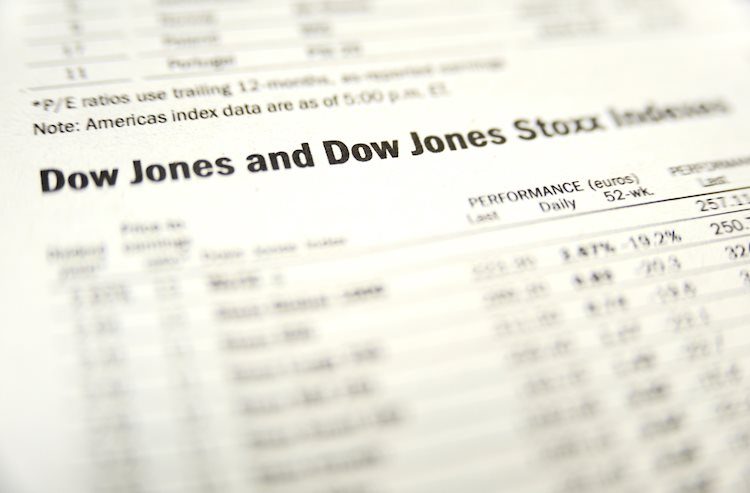- The Dow Jones is still battling to reclaim the 41,000 level.
- US PPI inflation kept the door open for a Fed rate cut next week.
- US Initial Jobless Claims also ticked up, but not enough to deter a rate trim.
The Dow Jones Industrial Average (DJIA) stuck close to familiar midrange territory on Thursday, holding close to the 41,000 handle but struggling to decisely reclaim the key technical figure. US Producer Price Index (PPI) business-level inflation rose slightly faster than expected on a monthly basis, while the annualized figure held steady, alleviating fears of rate-cut-threatening inflation pressures.
US PPI rose to 0.2% MoM in August, with core PPI accelerating to 0.3% MoM. Headline PPI was forecast to rise to 0.1% from the previous 0.0%, while core PPI was expected to rise to 0.2% from July’s -0.2% contraction. Despite the near-term upswing, annualized PPI inflation figures were much more attractive to investors, with YoY headline PPI easing to 1.7% from the previous period’s revised 2.1%, and ticking below the expected 1.8%. Core annualized PPI also beat the expected print, holding steady at 2.4% YoY versus the expected 2.5% uptick.
US Initial Jobless Claims also rose slightly higher for the week ended September 6, increasing to the expected 230K from the previous week’s revised 228K.
With PPI inflation remaining tame and the number of unemployment benefits seekers holding firmly in tepid territory, little lies in the way of a first rate cut from the Federal Reserve (Fed) on September 18. The Fed is broadly expected to deliver a 25 bps cut to kick off 2024’s late-starting rate cut cycle. According to the CME’s FedWatch Tool, rate markets are pricing in over 80% odds of the Fed cutting by a quarter point next week, with a slim 20% still leaning into hopes for an initial double-cut for 50 bps. Rate traders also overwhelmingly expect the Fed to deliver four cuts in total, with December’s rate call expected to land between 425 and 450 bps.
Dow Jones news
The Dow Jones struggled at the start of Thursday’s market session, but a late break in the trading day has the index on the climb, with only a third of the DJIA testing into the red. Losses are being led by Dow Inc (DOW), which fell by 1.1% to below $50.20 per share. On the high side, Caterpillar Inc (CAT) rose nearly 1.5%, climbing back into $340 per share.
Elsewhere in equities, UnitedHealth Group Inc (UNH) took a hit following the Trump vs Harris political debate this week. Presidential candidate Donald Trump took a big hit to his election odds following a poor debate performance.
Dow Jones price forecast
The Dow Jones spent early Thursday in the doldrums, holding on the low end despite an overall uptick in US equity markets. The index waffled below 40,750 before catching a late break into the high side, returning to challenge the 41,000 key price level once more.
The major equity index has struggled to make headway above the major price handle, remaining trapped below 41,000 for the six previous trading days. However, bulls look set to take another run at the high side, rallying prices 2.6% bottom-to-top over the last two days as daily candlesticks chalk in a bullish bounce from the 50-day Exponential Moving Average (EMA) at 40,366.
Dow Jones daily chart
Fed FAQs
Monetary policy in the US is shaped by the Federal Reserve (Fed). The Fed has two mandates: to achieve price stability and foster full employment. Its primary tool to achieve these goals is by adjusting interest rates. When prices are rising too quickly and inflation is above the Fed’s 2% target, it raises interest rates, increasing borrowing costs throughout the economy. This results in a stronger US Dollar (USD) as it makes the US a more attractive place for international investors to park their money. When inflation falls below 2% or the Unemployment Rate is too high, the Fed may lower interest rates to encourage borrowing, which weighs on the Greenback.
The Federal Reserve (Fed) holds eight policy meetings a year, where the Federal Open Market Committee (FOMC) assesses economic conditions and makes monetary policy decisions. The FOMC is attended by twelve Fed officials – the seven members of the Board of Governors, the president of the Federal Reserve Bank of New York, and four of the remaining eleven regional Reserve Bank presidents, who serve one-year terms on a rotating basis.
In extreme situations, the Federal Reserve may resort to a policy named Quantitative Easing (QE). QE is the process by which the Fed substantially increases the flow of credit in a stuck financial system. It is a non-standard policy measure used during crises or when inflation is extremely low. It was the Fed’s weapon of choice during the Great Financial Crisis in 2008. It involves the Fed printing more Dollars and using them to buy high grade bonds from financial institutions. QE usually weakens the US Dollar.
Quantitative tightening (QT) is the reverse process of QE, whereby the Federal Reserve stops buying bonds from financial institutions and does not reinvest the principal from the bonds it holds maturing, to purchase new bonds. It is usually positive for the value of the US Dollar.













